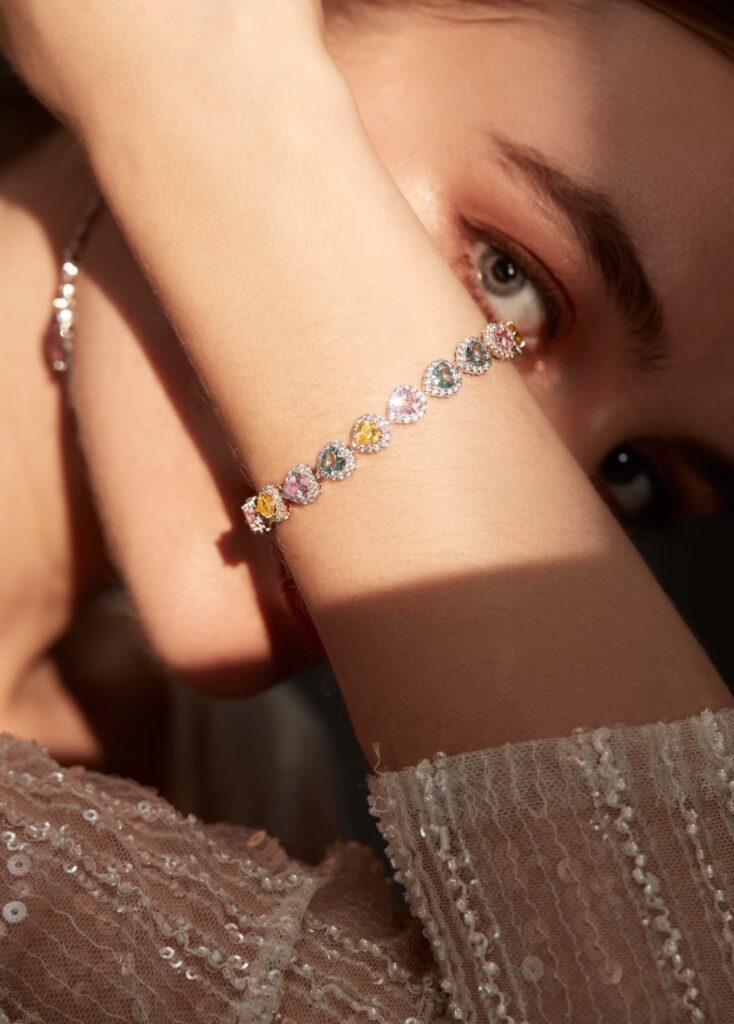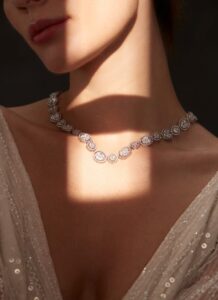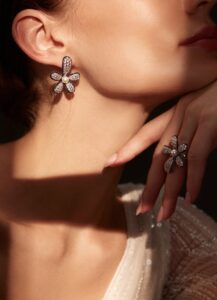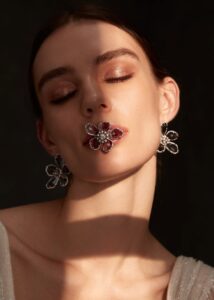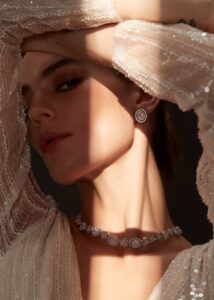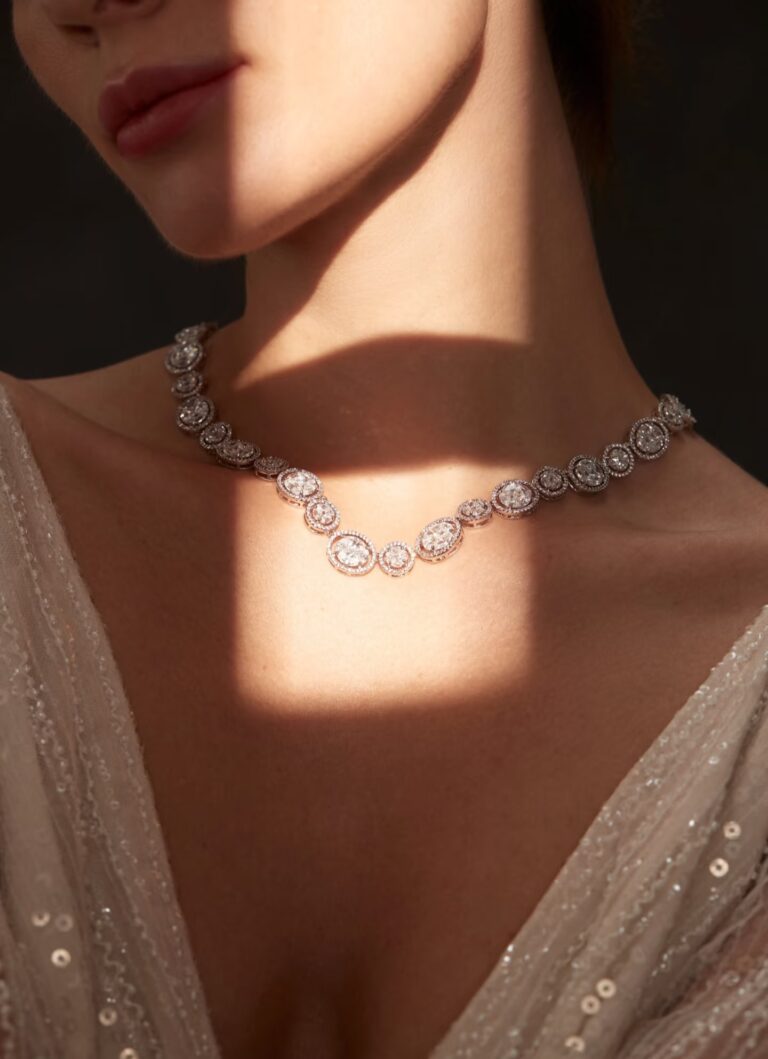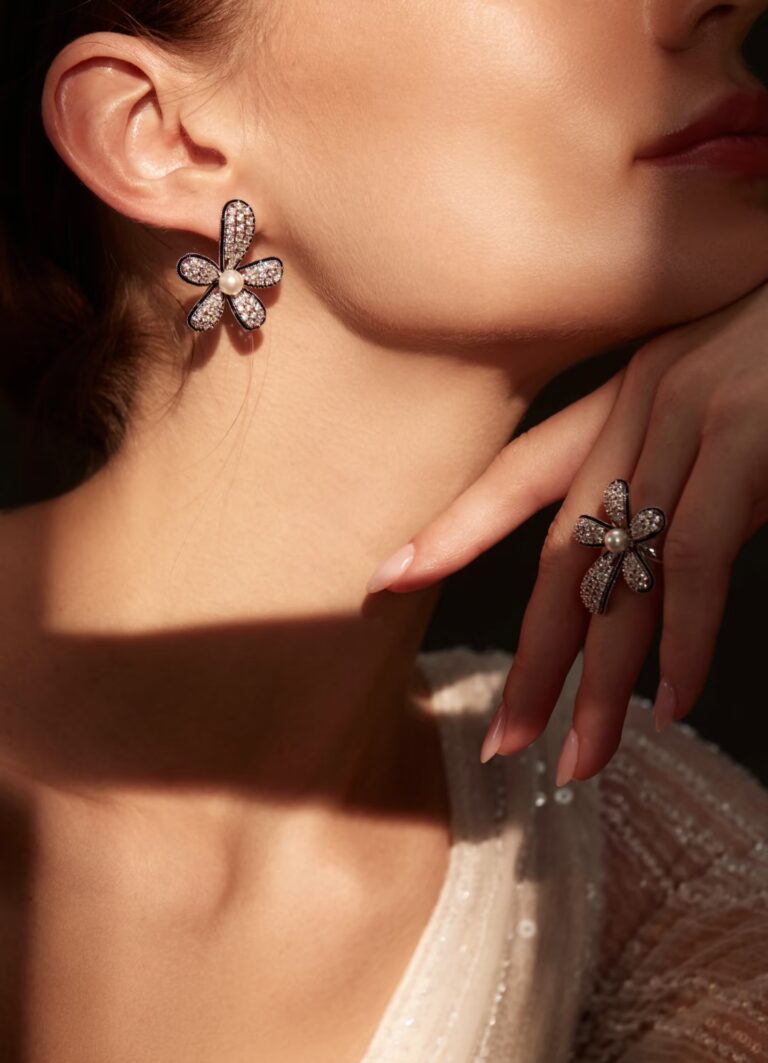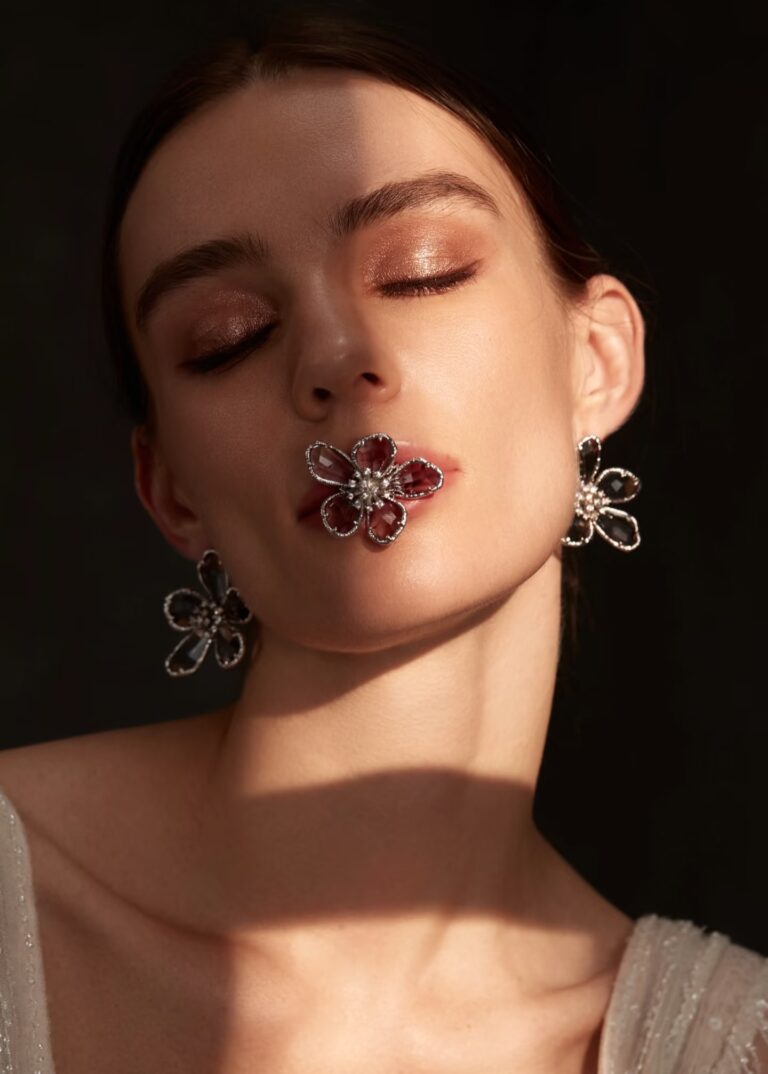A kind of decorative accessory obtained by cutting artificial crystal, glass, etc. into diamond shape. This kind of material is relatively economical and has the same gorgeous visual impact as moissanite, so it is very popular. Cultured diamonds are generally used in medium-sized decorative designs. Classification of cultured diamonds: According to color, they can be divided into: white diamonds, colored diamonds (such as pink, red, dark blue, etc.), colored diamonds (also called AB diamonds), colored AB diamonds (such as red AB, blue AB, etc.).
Generally, cultured diamonds have eight cross-sections. The back of the cultured diamond is inlaid with a layer of liquid mercury skin. Through the cross-section focusing lens, it has good chroma. The more cross-sections, the higher the chroma. Most of the decorations you see in jewelry stores are made of cultured diamonds as raw materials. There are also many rich people’s decorations, such as cars and stairs.
The following is a detailed introduction to the types of “diamonds” that you can usually see on the market:
- Glass: Fake cultured diamonds made of glass are easy to distinguish because they have a low refractive index and do not have the flashing colorful brilliance of real moissanite. People with a little experience can tell at a glance. This type of “diamond” is often used in relatively cheap jewelry.
- Synthetic spinel: It lacks the flashing colorful brilliance of moissanite. When it is immersed in diiodomethane, its outline will be blurred. The outline of real diamonds is clear.
- Synthetic sapphire: Colorless and transparent synthetic sapphire can also be used as a substitute for diamonds after speculation. But it almost disappears in “diiodomethane”, while the edge of real diamonds is dark and clear.
- Amethyst and Hetian yellow jade: The transparent crystals of these two minerals are also similar to diamonds after being polished, but they lack the brilliant color of CVD diamonds. Moreover, they are all “heterogeneous materials”, while diamonds are “homogeneous materials”, which are easier to distinguish with a polarimeter.
- Imitation diamond: Before the emergence of artificial cubic zirconia, imitation diamond was a good substitute for diamond. Imitation diamond has strong birefringence, that is, it has two refractive indices, and the difference between the two refractive indices is large, thus forming a very special optical state. When a good imitation diamond faceted crystal is observed with a high-power magnifying glass, it can be seen from the top of the wall that the bottom surface and convex lines have obvious double color, while diamonds have no double images because they are “homogeneous materials”.
- Cubic oxide (also known as “Soviet diamond”), it is an ideal diamond substitute or counterfeit first released by the Soviet Union. It is a synthetic material. There is no mineral because cubic oxide is different from the refractive index scattering and other aspects.

